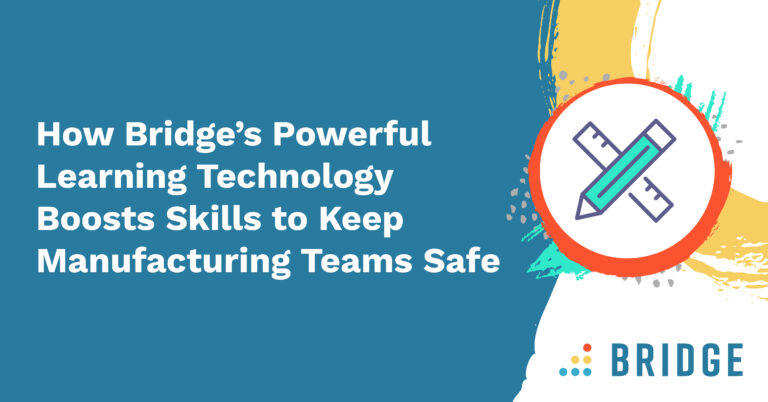The previous post in our “How to Develop Employees in the Changing Face of Work” series covered the key differences between the four generations that could be working in your office.
Today, we’ll dive into the four different working styles you’ll encounter and what to do about them. One new approach to identifying working styles is Deloitte’s Business Chemistry framework. Business Chemistry leverages a data-driven approach developed by Deloitte and scientists in neuro-anthropology (yes, it’s a thing) to help observe and understand different business styles.
Do your employees thrive in structure or chaos? Prefer competition or collaboration? Use logic or lofty ideas? By understanding these four working styles, managers can provide more meaningful and effective communication and development.
The Four Working Styles
- Pioneers – like the name implies, these trailblazers are spontaneous, adaptable, creative and full of imagination
- Guardians – pragmatic and practical, Guardians prefer structure and sweat the details pretty hard
- Drivers – these data and tech lovers are characterized by logic, competitiveness and directness
- Integrators – standout traits include a strong sense of empathy, a focus on relationships, respect for the consensus and high tolerance for ambiguity
None of us will fit completely into only one category, but understanding your employees’ dominant styles—as well as your own—can go a long way in L&D!
Here’s how to use this psychology-voodoo-magic to more effectively communicate with and manage your employees:
Pioneers: Party on
How do you identify the Pioneers in your crew? First up, they are most definitely the extroverts of the group, both full of energy and highly expressive. They <3 brainstorming and collaboration. And enviable to non-Pioneers, they adapt easily to change.
Pioneers don’t overthink decisions. They just go for it, often relying on their gut, knowing they can always change direction later. These risk takers can be a real asset when your team needs the next breakthrough idea.
How to work with Pioneers:
- Don’t be a stickler for process
- Don’t paint them into a corner with too many limits or restrictions
- Keep the word “no” to a minimum
- Collaborate but tread lightly on trying to take charge
During 1:1s and feedback sessions with Pioneers, managers should:
- Approach the feedback conversation as an exploratory exercise—a journey you take together
- Appeal to their imaginative nature by connecting your feedback to big-picture ideas or concepts
- Keep them engaged by asking open-ended questions throughout
- Allow them to discover the solution or way forward
Guardians: Sticklers for Specifics
Typically the most introverted of all four types, Guardians are reserved (ummm … ya think?). They like to speak slowly and take their time (and then some) in making decisions. Not surprisingly, Guardians like to stay in their comfort zones and are allergic to taking risks.
When a new direction is required, they will conduct extensive research before making a decision. And when they do, it’s usually set in stone. All in on the status quo, Guardians are fiercely loyal—but you have to earn it.
Working with Guardians:
- Lead with the facts and best practices
- Share details and be prepared for a list of questions with any new assignment or direction
- If you’re a Driver or Pioneer, pack your patience when dealing with a Guardian—they tend to move slower and are more introspective
During 1:1s and feedback sessions with Guardians, managers should:
- Replace emotion with logic when discussing issues or giving feedback
- Maintain a calm demeanor
- Speak slowly, leaving time for back and forth
- Include details and data to back up your talking points
- Offer to schedule a follow-up meeting so they have time to process everything that is discussed
- Collaborate on how to improve with them vs. telling them what to do next
Drivers: Not Here to Make Friends
Drivers are quintessentially defined by their affinity for numbers or all things technical. These gifts can be witnessed in math, engineering, tech and even music.
The Driver is direct, logical and highly competitive. With no fear when it comes to making tough calls, Drivers will gladly take the reins and value attaining goals over maintaining workplace relationships.
Drivers make decisions based on their own facts-based analysis. They are willing to take risks and open to exploring new ideas but will weigh any big moves carefully. And much like Guardians, once their mind is made up, it’s end of story.
Working with Drivers:
- Don’t overdo it on the small talk—get to the point
- Indecisiveness will not go over well
- If you’re going to speak up, demonstrate that you know what you’re talking about
- Share the facts, but don’t get bogged down in them
During 1:1s and feedback sessions with Drivers, managers should:
- Speak frankly and logically instead of leading with emotion
- Complement their directness with direct and straightforward feedback
- Be specific and provide examples
- Be prepared for a debate
- Use numbers and facts whenever possible
- Don’t let their take-charge demeanor undermine your authority or feedback
- Allow them to experiment and find a solution instead of dictating one
Integrators: No Confrontation for Me, Thanks
A blessing and a curse, Integrators seek consensus in all they do, trying to connect the team and be helpful. They are highly empathetic and can tolerate ambiguity with ease.
An Integrator’s thinking approach is anything but linear, with one eye on the big picture and the other focused on context. Typically a bit more traditional, Integrators do value the opinions of others when making decisions, and are known for their indecisiveness.
Dutiful as they are, Integrators are not huge fans of risk. However, if the majority is heading that way, they can easily follow suit.
Working with Integrators:
- Demonstrate emotion and genuine interest in conversations with Integrators
- Avoid coming across as aggressive in conflicts
- Lead with the human element, not facts and figures
- Take an active interest in them as a person—find a common ground to start off a conversation
During 1:1s and feedback sessions with Integrators, managers should:
- Begin with a collaborative approach and shy away from confrontation
- Demonstrate empathy
- Ask questions to get their point of view on the impact of their behavior
- Explain how the desired behavior can benefit the larger group
- End the conversation on a positive and optimistic note
- Reiterate that you trust them and their abilities
Here’s a handy infographic from Deloitte to help you remember key differences and similarities.
Identifying the working styles of your team is only part of the story. Managers should also take the Business Chemistry test to understand which style they are. This way, they can—and should—tailor their actions and message delivery to each working style as needed.
Be on the lookout for the next post in our series, where we address yet another consideration in developing the modern workforce—diverse learning styles. In the meantime, learn how to identify and motivate team members with high learning potential and creativity and for more on building strong manager-employee relationships, check out our e-book.



